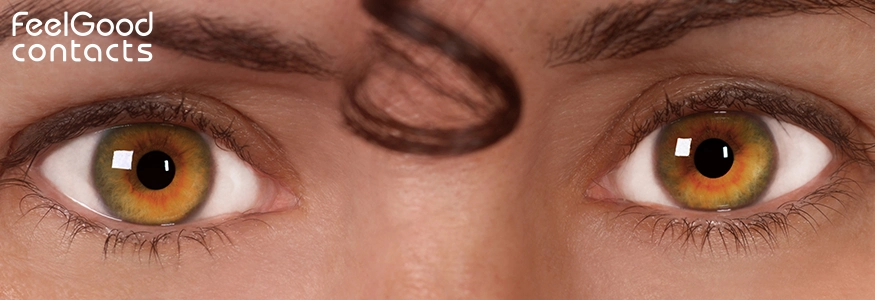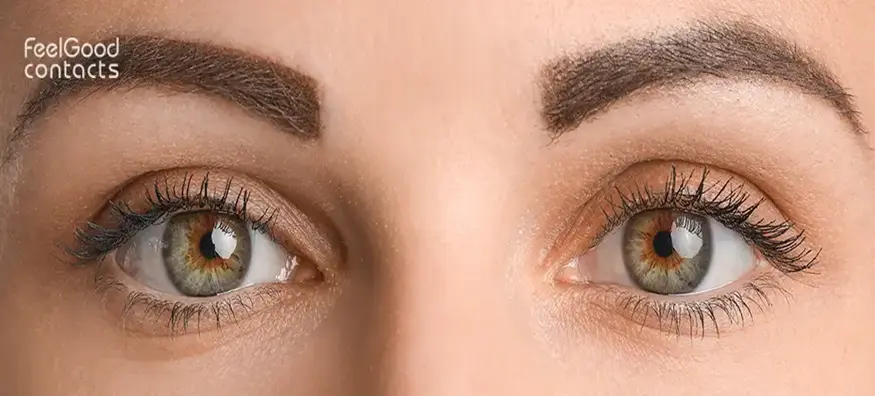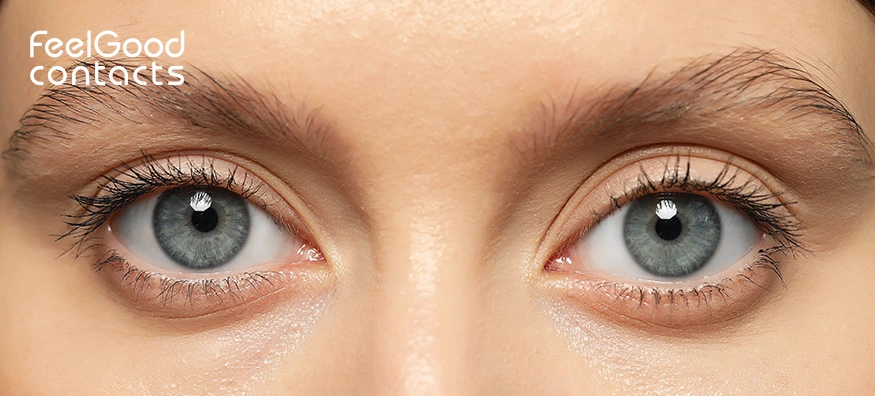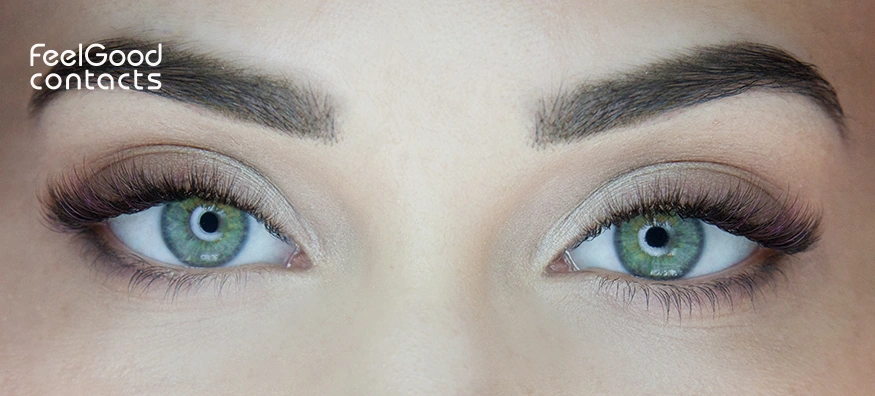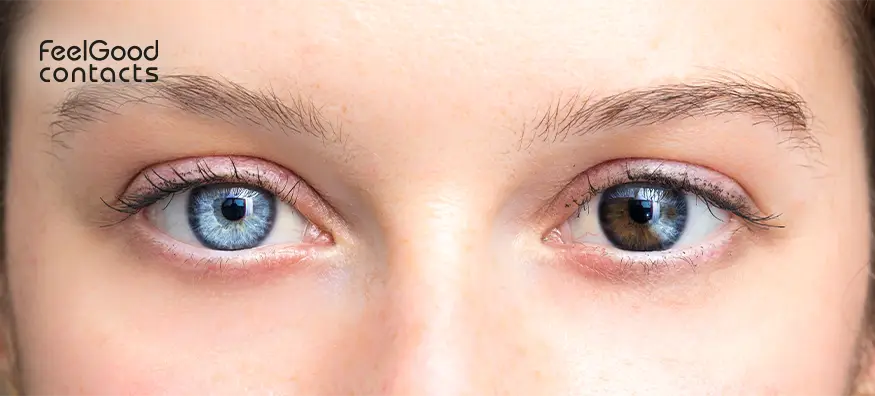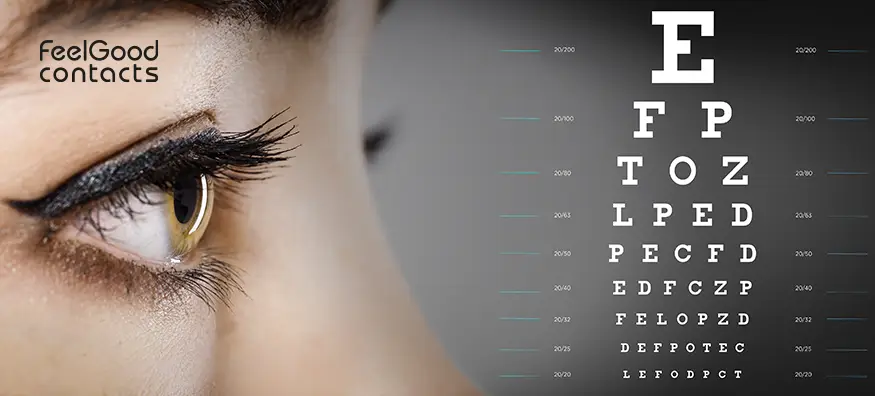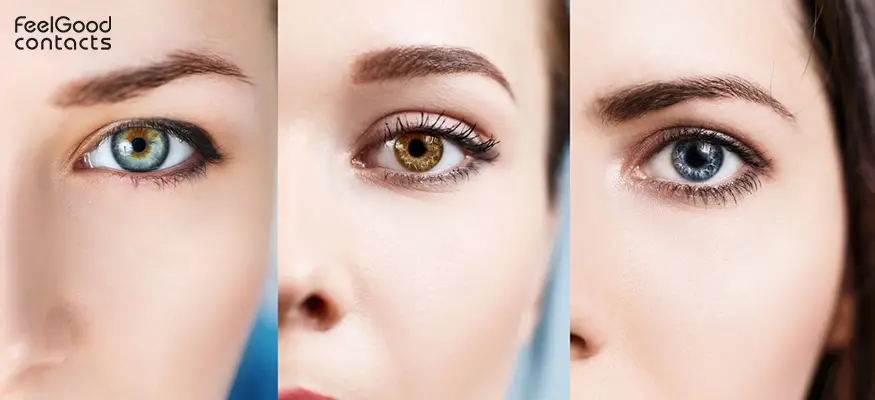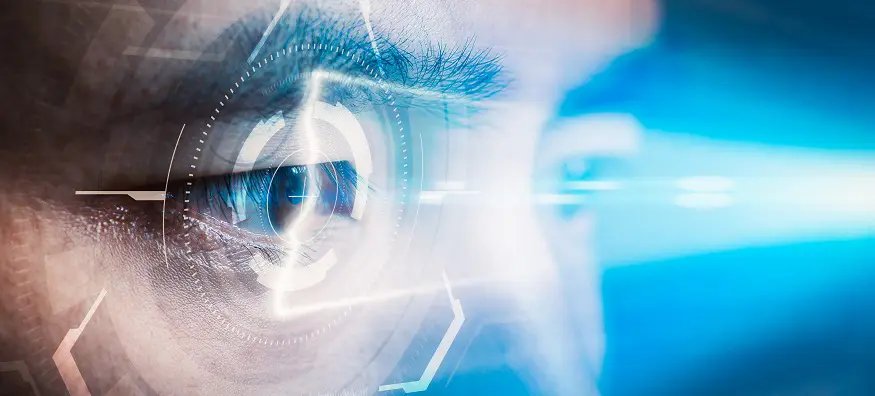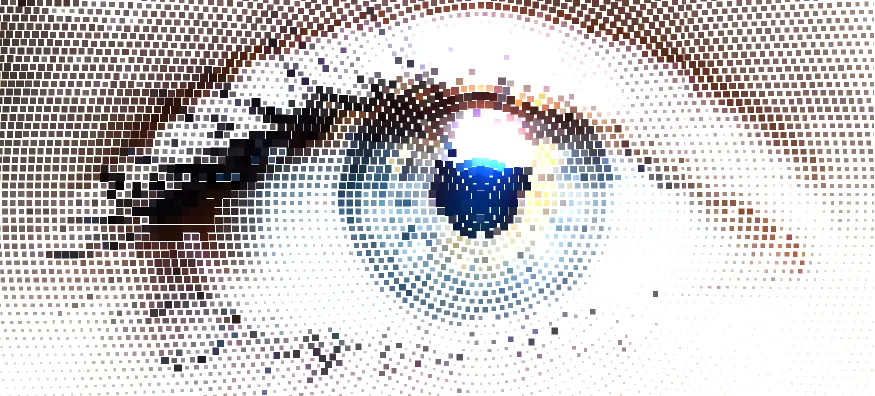Thousands of UK learner drivers get stuck in an endless cycle of waiting for their driving test. In February 2025, the government announced making an additional 10,000 tests available every month to clear this backlog. With this help on the way, the Britons aspiring to clear their driving exams need to stay informed and avoid the common pitfalls.
A legal requirement and a crucial part of any practical driving test is being able to prove that you have an adequate field of vision. But with millions of Brits needing visual correction devices to take to the road safely, applying for driver’s licenses and passing driving tests could be challenging. This comprehensive blog sheds light on one of the biggest reasons why they fail their driving exams even before starting the engine and how to secure success, and that is poor eyesight and lack of awareness.
How many Brits have failed their driving test without driving?
We submitted multiple Freedom of Information Requests to the DVLA (Driver and Vehicle Licensing Agency) to pull out the following data for the periods between 2018 to 2024:
- The number of candidates who failed the initial eyesight check at the start of their practical driving test each year (until the end of 2023 only).
- The number of GB driving license holders where the driver has an ‘01 - Eyesight Correction’ held on their driving license record.
- The number of GB license holders who have had their entitlement to drive revoked or application refused, for eyesight related conditions.
- The number of GB license holders who have had had their driving license application refused upon the driver’s declaration about a visual medical condition.
The results were concerning, revealing that 3,061 GB license holders unfortunately did not make it past the initial eyesight check at the beginning of a practical exam, where learners are required to read a registration plate from 20 metres away. They likely either forgot their correction devices or had an inadequate field of vision.
When broken down by year, the data shows that learner drivers are not learning their lessons, with numbers on a steady rise back to pre-covid levels of 697 in 2018 and 656 in 2019 – with just 280 fails in 2020 rising steadily to 340 in 2021, 488 in 2022, and 600 exactly in 2023, all down to failing the initial eyesight check.
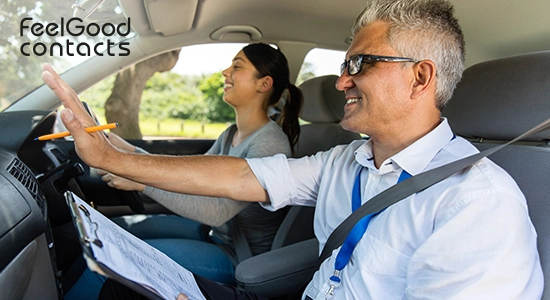
The true cost of failed driving tests at the initial eyesight check
Despite the cost of living increasing sharply over the last few years, the cost of a standard driving test has remained the same since 2009, with the price set at £62 in the UK, rising to £75 for evenings, weekends and bank holidays. Overall, this means that the total cost of failed driving tests during the initial eyesight check could reach up to £229,000.
Men are much likelier to fail at this stage than women
When broken down even further, by gender, male learner drivers were responsible for up to £139,000 in driving test charges before stepping foot into the car. In direct comparison to female learner drivers, the figure was slightly less, where they were responsible for a total of up to £91,000.
The data recorded showed that out of 3,061 drivers in total, 1,842 accounted for were male, while the remaining 1,219 drivers were female. As a percentage, this means that men are 41% more likely to fail their driving test at this stage of the practical driving exam compared to women.
In particular, the combination of 21–30-year-old males were the most prominent combination, with more than a third (36%) of all driving test fails at this stage of the driving test recorded falling into this category with 1,103. Here’s a detailed comparison chart for your reference:
| Year | 17-20 | 21-30 | 31-40 | 41-50 | 51-60 | 61+ | TOTALS |
|---|---|---|---|---|---|---|---|
| 2018 | Female: 80 | Female: 131 | Female: 72 | Female: 42 | Female: 12 | Female: 2 | Female: 339 |
| Male: 118 | Male: 121 | Male: 73 | Male: 35 | Male: 4 | Male: 6 | Male: 358 | |
| TOTAL: 697 | |||||||
| 2019 | Female: 85 | Female: 103 | Female: 55 | Female: 32 | Female: 15 | Female: 4 | Female: 294 |
| Male: 111 | Male: 116 | Male: 77 | Male: 39 | Male: 15 | Male: 4 | Male: 362 | |
| TOTAL: 656 | |||||||
| 2020 | Female: 30 | Female: 28 | Female: 26 | Female: 12 | Female: 2 | Female: 2 | Female: 100 |
| Male: 53 | Male: 60 | Male: 40 | Male: 23 | Male: 2 | Male: 2 | Male: 180 | |
| TOTAL: 280 | |||||||
| 2021 | Female: 34 | Female: 46 | Female: 30 | Female: 16 | Female: 6 | Female: 1 | Female: 133 |
| Male: 64 | Male: 64 | Male: 38 | Male: 28 | Male: 6 | Male: 7 | Male: 207 | |
| TOTAL: 340 | |||||||
| 2022 | Female: 29 | Female: 70 | Female: 33 | Female: 16 | Female: 7 | Female: 1 | Female: 156 |
| Male: 74 | Male: 130 | Male: 63 | Male: 45 | Male: 19 | Male: 1 | Male: 332 | |
| TOTAL: 488 | |||||||
| 2023 | Female: 42 | Female: 76 | Female: 43 | Female: 23 | Female: 9 | Female: 4 | Female: 197 |
| Male: 102 | Male: 158 | Male: 82 | Male: 43 | Male: 14 | Male: 4 | Male: 403 | |
| TOTAL: 600 | |||||||
| Total | Female: 300 | Female: 454 | Female: 259 | Female: 141 | Female: 51 | Female: 14 | Female: 1219 |
| Male: 522 | Male: 649 | Male: 373 | Male: 213 | Male: 60 | Male: 24 | Male: 1842 | |
| OVR TOTAL: 3061 |
Those over the age of 30 make up fewer than two in five of the numbers analysed, which is likely down to most learner drivers opting to learn at a younger age. In comparison to the younger drivers and when considering those over the age of 60, there were just 24 males who failed their driving test at the initial eyesight stage during the period analysed.
The largest difference recorded between genders within a single age group were those who fell into the 17-20-year-old category, with 522 men failing their test due to poor eyesight compared to just 300 women. As a percentage, this shows that males of this age are 54% more likely to fail than women at this stage of their driving test.
The ‘01 - Driving Eyesight’ capitals of the UK
One of our Freedom of Information requests to the DVLA allowed us to pinpoint UK locations that contain the most drivers that have informed the DVLA of their eyesight issue – meaning their driving license will contain a special code.
For those who need to wear their contact lenses or glasses while they are taking to the roads, drivers should declare this when applying or renewing their licenses. They then get a ‘01 - Eyesight Correction’ code on their driving licenses, indicating they must wear correction devices while driving.
The data provided showed that there are more than 14.1 million driving licenses in the UK with this code and allowed us to break down the numbers by each postcode area within the UK. Top 10 postcode areas in the UK that contain the most ‘01 - Eyesight Correction’ codes on driving licenses are:
| Rank | Location | Postcode Area | Total |
|---|---|---|---|
| 1 | Birmingham | B | 391,437 |
| 2 | Sheffield | S | 278,814 |
| 3 | Nottingham | NG | 260,133 |
| 4 | Glasgow | G | 244,546 |
| 5 | Leicester | LE | 243,988 |
| 6 | Newcastle | NE | 234,962 |
| 7 | Manchester | M | 234,509 |
| 8 | Peterborough | PE | 234,397 |
| 9 | Bristol | BS | 229,388 |
| 10 | Reading | RG | 210,992 |
Birmingham topped the list with 391,437 driving licenses out of a population of more than two million, totalling around one in five (19%) within the Birmingham postcode area that contain the ‘01’ code on their driving licenses. The Birmingham postcode area alone accounts for 3% of the entire UK’s ‘01 - Eyesight Correction’ code numbers, which is out of a total of 14,155,466 license holders. Despite its high license numbers, Birmingham ranked as the second lowest out of the top 10 in terms of proportion.
Sheffield ranked second for the most driving licenses with this code, with 278,814 instances and closely followed by Nottingham with 260,133 containing a ‘01’ code. Rounding out the top five were Glasgow and Leicester postcodes, separated by just 588 driving licenses, with 244,546 and 243,988, respectively.
In terms of proportion of population, Reading ranked the highest out of our analysis of the top 10 with around a quarter (25%) of the postcode area featuring this code on their licenses. However, when comparing the proportion of drivers to each postcode area, there was simply not a great enough amount to separate the top 10, with little over 6% splitting the highest and lowest proportion.
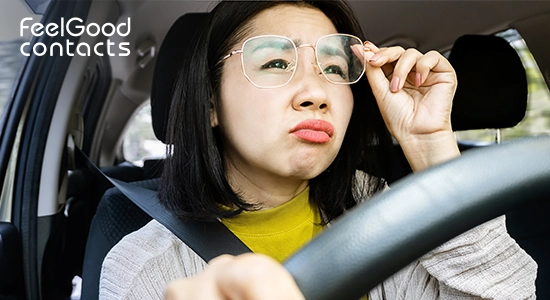
Almost 22,000 license applications refused for eyesight conditions since 2018
Our second Freedom of Information request submitted was to successfully determine the number of drivers who have found their license application refused due to the declaration of an eyesight condition between 2018 and 2024. Have a look at the results:
| Location | Postcode Area | 2018 | 2019 | 2020 | 2021 | 2022 | 2023 | 2024 | Total |
|---|---|---|---|---|---|---|---|---|---|
| Birmingham | B | 99 | 101 | 38 | 54 | 94 | 101 | 115 | 602 |
| Newcastle | NE | 60 | 72 | 34 | 45 | 79 | 73 | 81 | 444 |
| Portsmouth | PO | 80 | 63 | 51 | 46 | 73 | 58 | 51 | 422 |
| Brighton | BN | 83 | 72 | 39 | 45 | 66 | 49 | 50 | 404 |
| Nottingham | NG | 67 | 77 | 34 | 35 | 64 | 68 | 59 | 404 |
| Sheffield | S | 65 | 55 | 33 | 38 | 64 | 71 | 65 | 391 |
| Peterborough | PE | 66 | 62 | 36 | 34 | 74 | 53 | 52 | 377 |
| Swansea | SA | 65 | 56 | 35 | 25 | 62 | 57 | 57 | 357 |
| Bristol | BS | 52 | 62 | 36 | 34 | 61 | 55 | 50 | 350 |
| Manchester | M | 45 | 65 | 38 | 29 | 47 | 59 | 67 | 350 |
In total, there were just shy of 22,000 driving license applications that were refused within this time period, with 2024 featuring the most refusals with 3,781. The Birmingham postcode area once again topped another list within our analysis of the data – with 602 drivers putting the area in first place, with a top figure of 115 in 2024.
In second place with 444 applications refused was the Newcastle postcode area, however with a decrease of 158 from first to second, this means that there is a greater difference in numbers between first and second when compared to second and tenth place in Manchester with 350 refusals.
Concerning number of drivers yet to inform the DVLA of eyesight conditions
In addition to the above Freedom of Information requests, we also surveyed 2,000 Brits on whether they need glasses or contact lenses to drive. Many from this lot told us that they regularly wear glasses, including when driving but a staggering 35% said they have not yet told the DVLA. This implies that the number of drivers that should have a ‘01’ code on their licence is potentially much higher, putting themselves and others on the road at risk.
According to The Road Traffic Act 1988, Section 96.1, it is an offence to drive without the adequate eyesight tools. Rule 92 of the Highway Code also states: “You MUST be able to read a vehicle number plate, in good daylight, from a distance of 20 metres (or 20.5 metres where the old-style number plate is used). If you need to wear glasses (or contact lenses) to do this, you MUST wear them at all times while driving. The police have the power to require a driver to undertake an eyesight test.”
The following Freedom of Information request investigated the number of GB license holders who have had their entitlement to drive revoked, or application refused for eyesight related conditions, showing the above Highway Code in action:
| Location | Postcode Area | 2018 | 2019 | 2020 | 2021 | 2022 | 2023 | 2024 | Total |
|---|---|---|---|---|---|---|---|---|---|
| Birmingham | B | 102 | 99 | 58 | 86 | 135 | 81 | 89 | 650 |
| Sheffield | S | 63 | 81 | 47 | 84 | 121 | 65 | 74 | 535 |
| Bristol | BS | 72 | 81 | 37 | 59 | 74 | 52 | 58 | 433 |
| Nottingham | NG | 80 | 78 | 33 | 51 | 95 | 54 | 42 | 433 |
| Newcastle | NE | 55 | 75 | 38 | 57 | 75 | 60 | 60 | 420 |
| Peterborough | PE | 47 | 77 | 35 | 61 | 75 | 60 | 65 | 420 |
| Cardiff | CF | 62 | 79 | 35 | 50 | 74 | 50 | 54 | 404 |
| Glasgow | G | 57 | 74 | 33 | 51 | 70 | 45 | 66 | 396 |
| Swansea | SA | 60 | 69 | 33 | 48 | 68 | 45 | 67 | 390 |
| Royal Tunbridge Wells | TN | 68 | 59 | 24 | 51 | 80 | 48 | 52 | 382 |
- In total, there were just over 24,500 instances of licenses being revoked between 2018 and 2024, with the Birmingham postcode area once again containing the highest figures, with 650 in total.
- 2022 as a year saw more combined licenses revoked and applications refused than any other year, with 4,716 in the single calendar year, with the Birmingham postcode area alone accounting for 135 of these.
- 2019 was another year where numbers surpassed 4,000, however this sharply dipped to just over 2,000 in 2020 – likely due to the COVID pandemic and as a result less people on the roads.
Key takeaways from the study
- Overall, this study reveals a growing concern in the UK related to poor eyesight and its impact on learner drivers, driving tests and road safety.
- There were an alarming number of individuals failing the initial eyesight check during their driving exam, with over 3,000 candidates failing this simple test from 2018 to 2023.
- Furthermore, the research highlights a significant number of drivers who neglect to inform the DVLA about their eyesight conditions, putting both themselves and others at risk.
- Although the exact reasons for these driving test fails weren’t disclosed, it highlights the importance of regular eye exams to check for any eyesight conditions and existing contact lens or glasses prescriptions to make sure drivers of the UK aren’t endangering themselves or other road users.
Sources and Methodology
- Survey of 2,000 Britons placed into the field in June 2025.
- FOI Request to the DVLA (FOIR12323) - The number of GB driving license holders where the driver has an ‘01 - Eyesight Correction’ held on their driving license record.
- FOI Request to the DVLA (FOIR12324) - The number of GB license holders who have had their entitlement to drive revoked or application refused, for eyesight related conditions.
- FOI Request to the DVLA (FOIR12325) - The number of GB license holders who have had had their driving license application refused, where the driver has declared a visual medical condition.
- FOI Request to the DVSA (FOI 2504-073484) - The number of candidates who failed the initial eyesight check at the start of their practical driving test each year. (UNTIL END OF DECEMBER 2023 ONLY)
- Number of driving license holders within the UK = 42,120,966, sourced from https://www.thisismoney.co.uk/money/cars/article/13271199/record-number-driving-licenses.
- Population statistics by postcode gathered from the 2021 census via https://www.nomisweb.co.uk/sources/census_2021_pc/
- Scottish (Glasgow and Edinburgh) postcode populations were gathered from the 2011 Scottish census due to no updated data available - https://www.scotlandcensus.gov.uk/documents/2011-census-table-data-detailed-characteristic-postcode-sector/
- Driving eyesight rules - https://www.gov.uk/driving-eyesight-rules
- Driving test costs - https://www.gov.uk/driving-test-cost
- Driving tests haven’t changed in price since 2009 - https://www.gov.uk/government/consultations/changing-the-cost-of-dvsa-services-for-2021-to-2022/changing-the-cost-of-dvsa-services-for-2021-to-2022
- Male percentage of 3,061 drivers = 60.1764129%
- Female percentage of 3,061 drivers = 39.8235871%
- https://www.legislation.gov.uk/ukpga/1988/52/section/96
- https://www.gov.uk/guidance/the-highway-code/rules-for-drivers-and-motorcyclists-89-to-102#
















